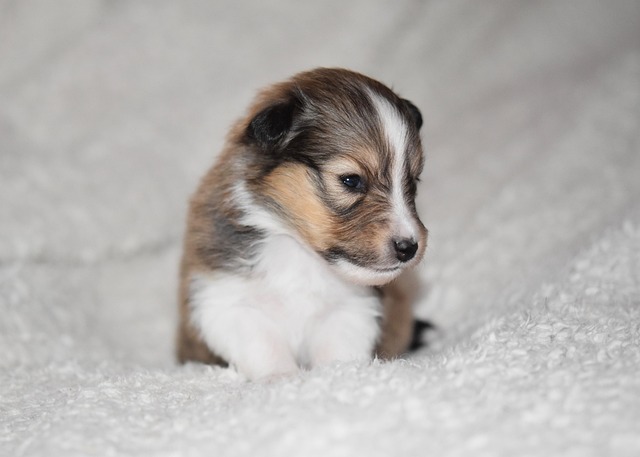
How do i train my dog to be obedient?
Watching your dog dart across the park ignoring your calls isn’t just frustrating—it can put them at risk near busy streets or public spaces.
When you go out with your cute puppy and watch it excitedly running around you, even occasionally rushing out, do you both worry about its safety and long for it to obediently accompany you? Teaching puppies to accompany them not only makes walking easy and enjoyable, but also an important step in cultivating good relationships between humans and dogs. As long as you master the correct methods and integrate full patience and love, you can harvest an obedient accompanying follower.
Establishing a deep trust relationship with the puppy is the foundation before formal training. A puppy is like a blank sheet of paper, curious about the world and highly dependent on its owner. In daily life, familiarize it with your voice, scent, and movements through gentle caresses, gentle calls, and timed feeding. When you feed it, gently call its name, such as "Duo Duo, come eat", and gently stroke its head. It will gradually associate you with beautiful things, thus establishing trust and dependence on you.
Choosing the appropriate training tools is also important. A traction rope of moderate length and comfortable material is essential. For puppies, do not choose ropes that are too thick or made of hard materials to avoid discomfort. Compared to collars, chest straps exert less pressure on the neck of puppies and are more suitable for their use. When you put on a chest harness and leash for a puppy, be gentle and avoid hurting it.

Training should start with a familiar environment for puppies, such as a yard or a quiet indoor space at home. Let the puppy adapt to the presence of the leash first, don't rush to pull it away. Let it drag the towing rope freely and become familiar with the weight and feel of the towing rope. When it no longer resists the towing rope, it can begin preliminary accompanying training. Stand on the left side of the puppy, hold the leash with your left hand, and control the length within the appropriate range, neither too tight to restrict its movement nor too loose to let it run around freely. Then, take your left foot and give clear and concise instructions, such as "go", and use your right hand to hold your favorite snack or toy in front of it, guiding it forward. If the puppy can follow your footsteps, give it a reward in a timely manner, praise it for being "great", and give it some snacks. During this process, be patient and do not force the puppy to learn in a relaxed and enjoyable atmosphere.
As the puppy gradually becomes familiar with the accompanying instructions, the difficulty of training can increase. Take it to a slightly disturbed environment, such as the garden in the community, where there may be other people and pets. When a puppy is attracted by external things and wants to leave your side, do not pull the leash hard, but immediately stop and wait for it to calm down and return to your side. Then give the command to 'go' again and continue moving forward. If it can stay with you in a disruptive environment, give it more generous rewards to make it understand that it must obey your instructions in different environments.
During the training process, it is important to pay attention to the emotions and physical strength of the puppy. Puppies have shorter attention span and are prone to feeling tired. If you notice that it is becoming impatient or moving slowly, you should pause the training and let it rest for a while. You can accompany it to play with its favorite toys for a while, relax its mood, and continue training after it recovers its energy.
Do not get angry or scold the puppy when it occasionally appears to be out of company. Because puppies may not fully understand your instructions or have been strongly stimulated by external factors. At this point, gently guide it and reinforce the accompanying instructions. Every successful accompanying training is an accumulation of trust and understanding between you and the puppy.
Teaching puppies to accompany them is a journey full of love and patience. When one day you take your puppy out and it can closely follow you, keeping pace with you, enjoying the beautiful time of walking, you will understand that all the efforts are worth it. Let us accompany our puppy with love and patience, making it the most intimate companion in our lives.

Watching your dog dart across the park ignoring your calls isn’t just frustrating—it can put them at risk near busy streets or public spaces.

New puppy owners often find themselves rushing to clean up accidents before they set in, and that’s where puppy pad training becomes a game-changer.

If you've noticed your dog's waistline disappearing and your veterinarian has mentioned those few extra pounds, your first instinct might be to simply reduce the amount of food in their bowl.

Training a dog to use a designated spot indoors isn’t as daunting as many new owners fear, but it does take consistency and an understanding of your pet’s needs.

That moment of dread on a walk is all too familiar for many new dog owners. You see another dog approaching down the sidewalk of your neighborhood

If the sight of another dog on your neighborhood walk makes your heart sink as your own dog erupts into a frenzy of barking and lunging, you're not alone.